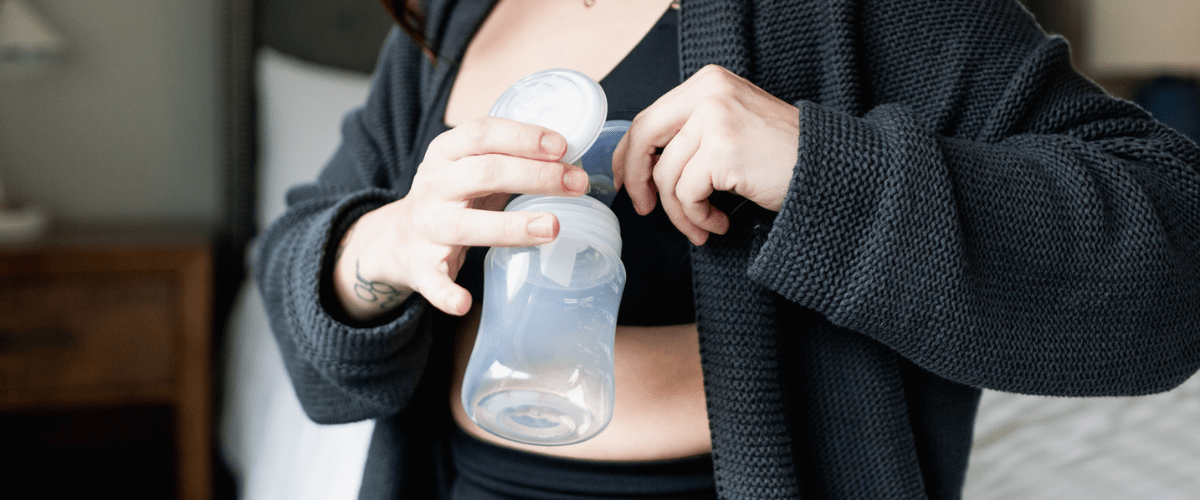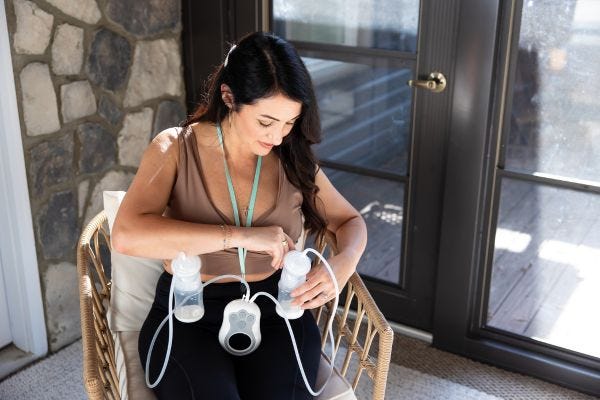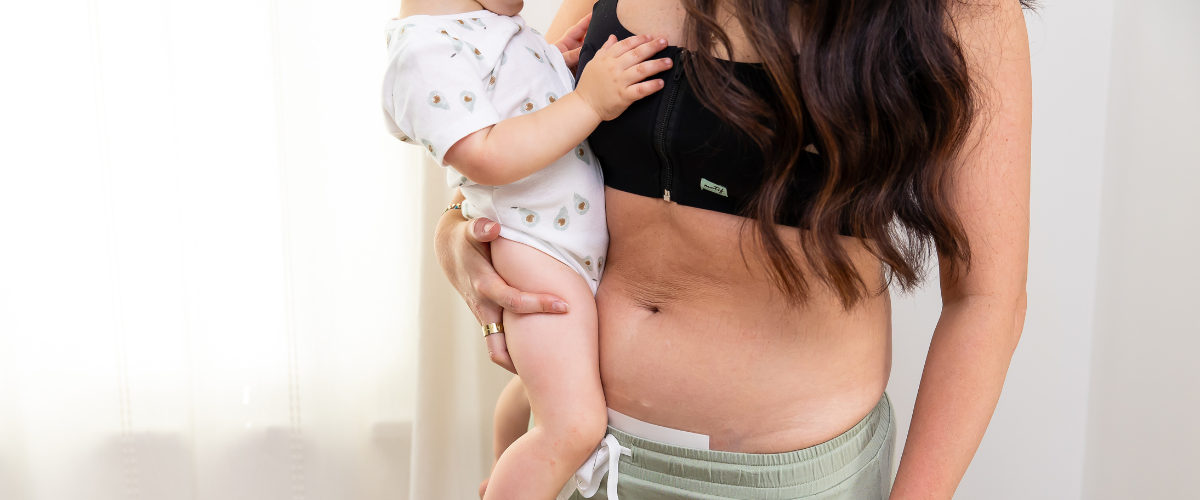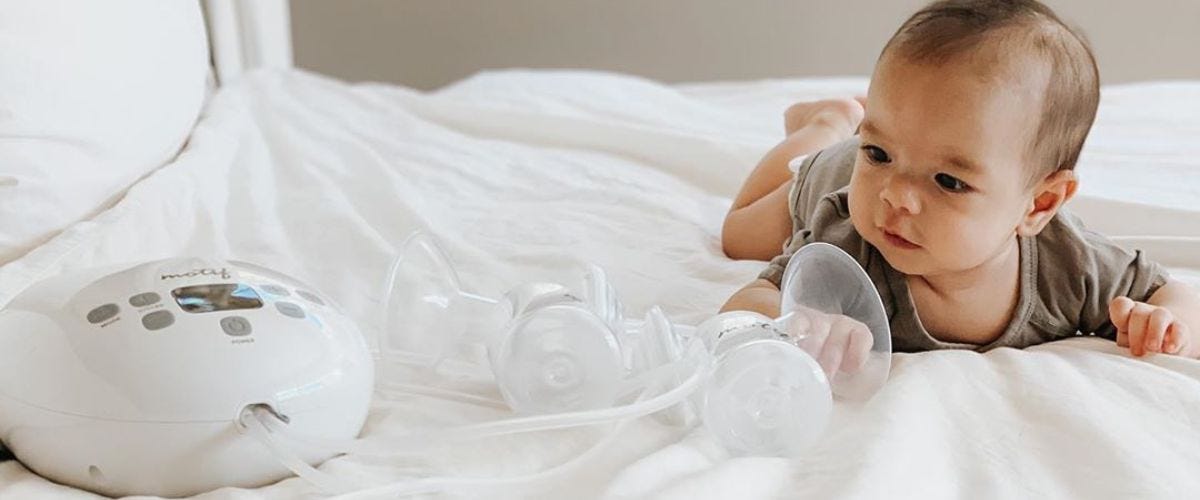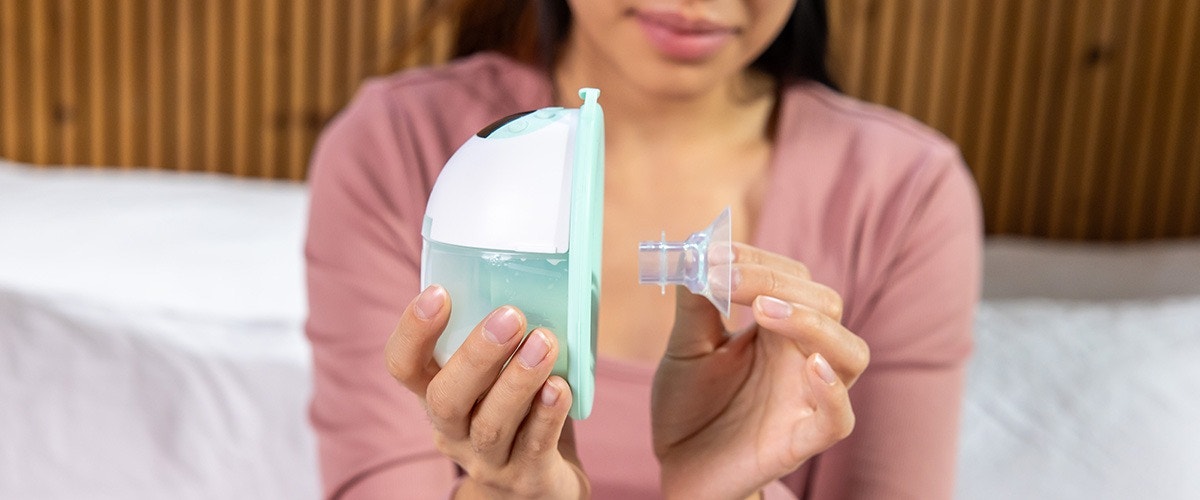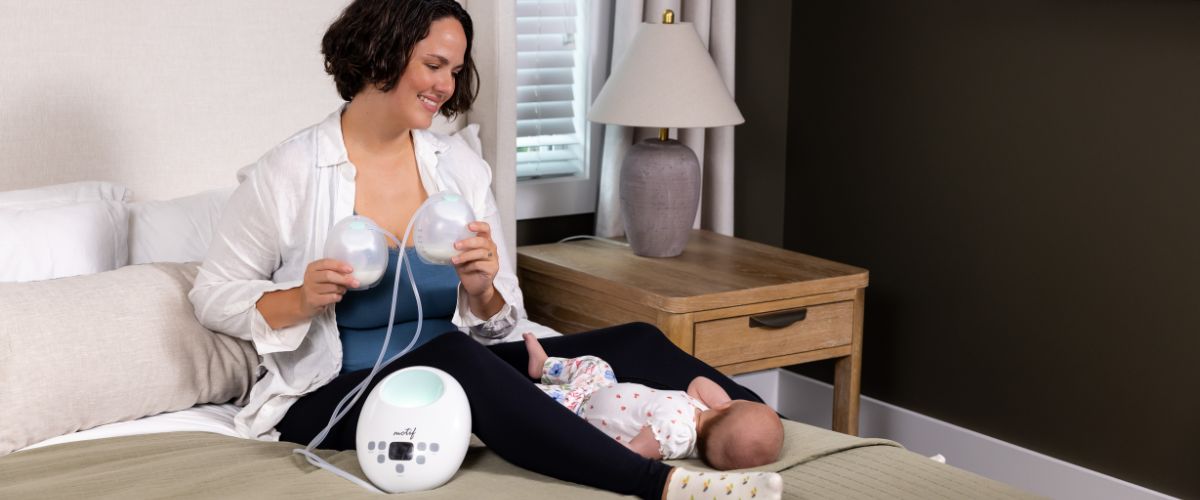Pumping With Flat or Inverted Nipples
Though anatomy drawings, breastfeeding illustrations, and social media posts often depict tight, round breasts with symmetrical and protruding nipple shapes, it’s important to know that nipples come in all sorts of shapes and sizes. In fact, your nipples may not even be the same shape and size as each other! Pumping with flat or inverted nipples can pose some extra challenges, but with the info in this guide, you’ll navigate the process with ease!
Do I have Inverted or Flat Nipples?
Causes of Inverted Nipples
An inverted nipple retracts inward into the breast tissue rather than protruding outward from the breast. The retraction may be mild or severe. About 10%-20% of women are born with at least one inverted nipple. Most never experience any negative symptoms until they begin breastfeeding.
Nipples are made of erectile tissue that responds to stimulation. Inverted nipples are often caused by adhesions, or bands of connective tissue, that prevent them from protruding when stimulated. Rarely, nipple inversion is due to breast injury or disease. If you develop an inverted nipple (that you weren’t born with), contact your healthcare provider to help determine the cause. nt infant formula shortage. If you have concerns about baby's weight or need resources, contact a health care provider or pediatrician.
Causes of Flat Nipples
Flat nipples lie level with the surrounding areola or may only stick out a little even when stimulated. Some women are born with shorter or flatter nipples. Other women never experience flat nipples until there is breast engorgement present. Receiving too many IV fluids during labor and birth can cause hyper-hydration that results in swelling in the body. This hyper-hydration also causes engorgement and swelling of the areolae which causes mom’s nipples to appear flat. Additionally, when breast milk production amps up at around days 3-5 postpartum, engorgement can cause the mom’s nipples to appear flat.
Will My Baby be Able to Latch to My Flat or Inverted Nipples?
It’s important to note that having flat or inverted nipples does not mean you will not be able to breastfeed! An IBCLC can teach you latching techniques to help your baby feed at the breast. While the internet is full of information about nipple shields, breast shells, nipple correctors, sore nipple treatments, and more, it’s best to work with a breastfeeding specialist to assess your baby’s latch and create a personalized plan to help you and your baby meet your breastfeeding goals.
Treatment of Flat or Inverted Nipples
Stimulation
If flat nipples are a result of engorgement, using Reverse Pressure Softening can help! This technique helps to temporarily move fluid/swelling away from the nipple and areola so the baby can latch more easily. If engorgement is causing your nipples to be flat, rest assured this is only a short-term problem.
- If your engorgement is caused by too many IV fluids, getting moving after birth and drinking plenty of water can help because doing these two things will help your body rebalance fluids inside your cells.
- If you are engorged because your milk is coming in during the early days, now that this type of engorgement is temporary and usually resolves in 2-4 days. If it persists, contact an IBCLC.
Corrective surgeries are offered to cosmetically correct inverted nipples. These surgeries can change outward appearance, but also disrupt milk ducts and nerves that are necessary for breastfeeding. If you’re considering surgery to correct inverted nipples, know that the surgery may make it more difficult or even impossible to breastfeed.
Do Flat or Inverted Nipples Change With Breastfeeding?
They can! It is not unusual for nipples to change in size and shape as a baby’s suckling draws them out. Nipples often begin to protrude more and even become more elastic with breastfeeding. Some mothers experience nipple soreness due to the stretching of adhesions in the first one to two weeks of nursing. Pumping can also cause changes in nipple size, shape, and elasticity.
It is crucial to meet with a lactation consultant to ensure that nipple pain is not the result of a poor latch.
How to Pump With Flat or Inverted Nipples
Step 1 - Choose Your Breast Pump
Determine how often you will need to pump. Frequent milk removal is essential for making enough milk. Be sure to pump for any missed nursing sessions.
- Occasional Pumping - If you will need to pump during temporary separations from your baby such as for a doctor’s appointment, running errands, or going on a date. Most pumps will work well for this type of pumping. The Motif Duo is a great choice because it offers portability, hands-free convenience, and effective milk removal.
- Daily Pumping and Exclusive Pumping - If you will be pumping regularly while at work if you will be exclusively pumping (no latching/nursing):
- A workhorse pump like the Motif Luna is an ideal primary pump. With its powerful motor and independent cycle and vacuum controls, Luna offers complete customization of your pumping experience.
- Motif Aura compliments the Luna for pumping on the go from time to time.


Step 2 - Measure Your Nipples
This is the first step to finding the right flange fit and can be tricky with flat or inverted nipples. A poorly fitted flange can make pumping painful and can reduce milk supply over time.
- Measure the base of your nipples in millimeters.
- Stimulating your nipples to evert can make it easier to tell the difference between the nipple base and surrounding areola.
- Apply gentle pressure with your thumb and forefinger on either side of your nipples and roll until they evert.
- If your nipples don’t evert with rolling, pumping at low suction for 1-2 minutes can help to draw them out.
- If your nipples don’t evert with massage or pumping, it is still possible to measure them, but it may be more difficult to identify the base.
- Be sure to measure both sides at the base of the nipple as they can be different sizes.
- Stimulating your nipples to evert can make it easier to tell the difference between the nipple base and surrounding areola.
- If you’re having difficulty getting an accurate nipple measurement, reach out to an IBCLC (International Board Certified Lactation Consultant) for help.
Step 3 - Find the Right Fit
Finding the right flange fit for flat or inverted nipples can take some trial and error.
- Start by adding 0-3 mm to your nipple measurement. Most moms find pumping to be comfortable and effective with a flange that is closely fitted to the nipple.
- Motif Luna and Motif Aura offer the widest range of flange sizes among our Motif family of pumps.
- Luna breast shields are available in 16mm, 21mm, 24mm, 28mm, and 32mm.
- Motif Aura silicone sizing inserts are available in 15mm, 17mm, 19mm, 21mm, 24mm, and 28mm
- Do a pumping trial to observe how your nipples respond.
- If it is difficult to fit the tip of your nipple into the flange tunnel, the flange is too small.
- This can result in painful chafing, blisters, swelling, peeling skin, and inadequate draining of the breasts
- If you see Areola entering the flange tunnel, the flange is too large.
- This can cause painful swelling and may result in irritation where the flange tunnel meets the breast as well as at the nipple tips.
- If pumping is comfortable and your breasts are well-drained, the fit is good!
- Elastic nipples are more common with flat nipples than inverted nipples. Our nipples are made to stretch, but some women experience difficulty with pumping due to a bit of extra elasticity in their nipple tissue.
- Motif Luna and Motif Aura offer the widest range of flange sizes among our Motif family of pumps.
Signs of elastic nipples include:
- Your nipples are stretching to the end, or nearly the end, of the flange tunnel.
- No matter what size of flange tunnel you use, your areola stretches into the flange tunnel.
- Your breasts don’t feel adequately drained after pumping.
Tips for managing elastic nipples:
- Try a smaller flange size (you may need to work with an IBCLC for this).
- DON’T lubricate. Lubbing your flanges can cause your areola to slide even further into the flange tunnel.
- Turn the suction down. This can help keep your nipples from stretching too far into the tunnel.
- Consider a silicone insert to help hold your areola tissue back.
Step 4 - Be Aware of Challenges
Knowing what challenges might pop up can help you be prepared to navigate them.
- Inverted nipples can be quite sensitive once everted.
- This sensitivity should be reduce over time, but it is important to work with a lactation consultant if it persists beyond the first couple of weeks postpartum.
- Your nipples may remain wet after pumping if they invert just after you’re done. This can result in irritation.
- After pumping or nursing, pat your nipples dry and consider applying a breastfeeding-friendly nipple ointment or balm. Coconut-oil based options are a good choice because coconut oil is moisturizing and has antimicrobial properties.
- Some moms find that wearing breast shells helps to protect their nipples and allow airflow between pumping or nursing sessions.
Find What Works for You!
Because each mom is different, find what works for you! Know that having flat or inverted nipples may mean that some conventional advice doesn’t apply to your breastfeeding journey. It’s ok to take what works and reject what doesn’t. Often, with a few modifications, mothers with flat or inverted nipples go on to successfully provide breastmilk for their babies. Remember that breastfeeding success doesn’t have to look just one way.
Information provided in blogs should not be used as a substitute for medical care or consultation.


